General Observations
Update 2/3/19: Our expenses for the first eight months of travel were originally posted here. We’ve since broken those expenses out into separate posts, one for 2017, and one for 2018.
While we enjoyed each country in Latin America for its own merits, some have intrigued us more than others. Following is a summary of our reflections about each country in light of our personal preferences and priorities.
Latin America Pros
-
Pharmacies – At the top of our list of things we love about Latin America are the pharmacies. We know: weird, right? But in our opinion, the Latin Americans have a much better system. They treat customers as adults who are capable of making informed decisions (no hand-holding needed) and savvy enough to visit a doctor when needed. To illustrate the difference, we contrast our recent experiences refilling prescriptions in the US vs. Latin America (basically the same procedure in every country that we visited).
-
Latin America – Take a box, bottle, or the generic name and dose, of a prescription into the pharmacy, show it to the pharmacist, he/she locates the drug, we pay $2-30, done.
-
USA – Ann previously had Kaiser Insurance and is now on Medicare. We could have refilled everything in Mexico before we left but given that she has Medicare, we waited. We refilled all of Ian’s before leaving Mexico since he has a high deductible policy. Find a doctor who takes Medicare, end up needing three visits and labs before any prescriptions could be filled (some of these Ann had been taking for 20 years), then multiple iterations with the pharmacy because certain prescriptions weren’t covered. End up leaving the US without one prescription because it would have cost over $200 and Ann probably had enough to last until we got back to Mexico in November. Total billing to Medicare over $500.
Conclusion: Make sure that even if living in the US full time, that we live close enough to the border, or travel out of the country often enough to avoid being at the mercy of US pharmaceutical companies.
Reflection: Are the extra steps and hassle a result of doctors trying to maximize their billing to Medicare, or trying to avoid lawsuits? Ether way, it’s no wonder that the US has the highest healthcare costs in the world.
-
-
Doctor and Dentists – Also near the top of our list of favorite features of Latin America, again, weird. But we didn’t even realize how bad the US system was until we’d experienced an alternative.
-
Latin America – Between the two of us, we needed medical care in every country except Panama. The procedure was simple: call and make an appointment for the next day or at most a couple of days away (for specialists), or in some cases, just drop in. Visit doctor, see doctor or dentist (not PA, NP, or hygienist) explain issue, get treatment and recommendations, pay $15-40, leave with prescription medicines if necessary. Note: Both times we got our teeth cleaned, it was by a dentist (not a hygienist) and cost about $15. We asked about crowns, and they would have cost $200 on average.
-
USA – Call and make an appointment a couple of weeks (or sometimes months) in advance, get on doctor’s website or arrive at doctor’s office 15-30 minutes early to fill out 5 pages of forms. See PA or NP, get charged for new patient visit ($180 if it wouldn’t have been covered by insurance).
-
-
People are generally very friendly.
-
In restaurants, the waiters aren’t hovering, don’t interrupt conversation, and the check doesn’t come until asked for.
-
Excellent inexpensive mass transit (buses, plus Metro in Medellin), both local and long distance.
-
A general sense of putting friends/family/social interaction above the sale/business.
Latin America Cons
- Property theft – Every country we visited, even in good neighborhoods, we either saw bars on the windows (at least ground floor), the property was behind a locked gate or high wall, or had a portero (guard). (Fast forward a bit: ground floor windows have bars in many locations in Spain.)
- Inefficiency – In every country we experienced at least one shake our head moment. Either learn to accept and laugh at these or you will become very frustrated, very fast.
- Spotty customer service – Checkout lanes are often slow, quite regularly we approached counters and were ignored for quite a while. At other times, we exerienced good customer service.
- Manana time – This doesn’t mean tomorrow, it just means not now, and possible never.
- Noise – Every country we visited had a high level of noise compared to the US, even into early morning hours. Whether it was music everywhere, dogs barking or roosters crowing, firecrackers, etc.
- Plumbing and lack of hot water – Because of plumbing that is not up to western standards, toilet paper is usually placed in a waste basket, not the toilet, which can get a bit aromatic. Many apartments/homes have hot water only in the shower, and the “hot” water is often, at best, lukewarm. Sometimes the shower is equipped with suicide shower heads (an inline heater with bare wires). Water, electricity, what could go wrong.
- Litter – A problem most places we visited, except Colombia.
- Airbnbs where the host is not from the US or Canada tend to be more sparsely equipped and furnished with less than comfortable beds and often other uncomfortable furniture as well, possibly based on cultural norms and expectations.
Country Specifics
Guatemala
Note: we visited only Lake Atitlan and Antigua, but we passed through Guatemala City.

Pros
- Inexpensive
- Temperate climate in Lake Atitlan area
- Short rainy season for Central America
- Friendly hard working indigenous Maya culture around Lake Atitlan
- Beautiful scenery around Lake Atitlan
- Easy to get visa
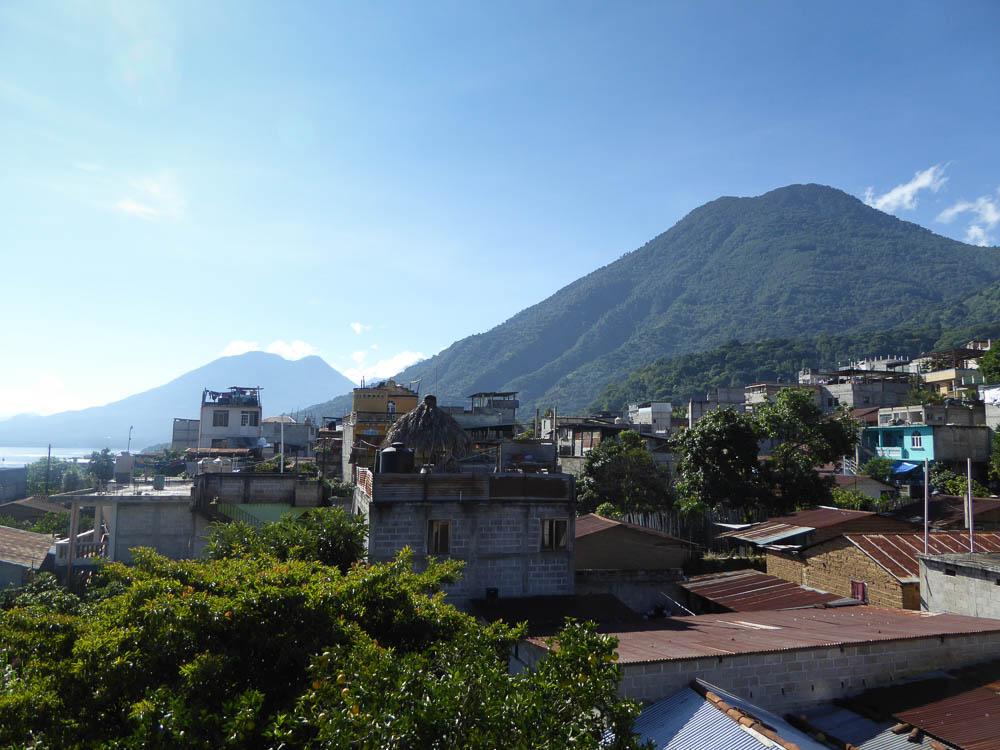
Cons
- Lots of poverty
- Water not safe to drink
- Ugly houses and buildings in poor areas
- Local food gets boring, other food expensive
Costa Rica

Pros
- Water safe to drink
- Natural beauty and wildlife
- Inexpensive health care and insurance options
- Large expat communities*
- Central Valley with it’s temperate climate is still close enough to visit the beach as a day trip, although this would require a car.
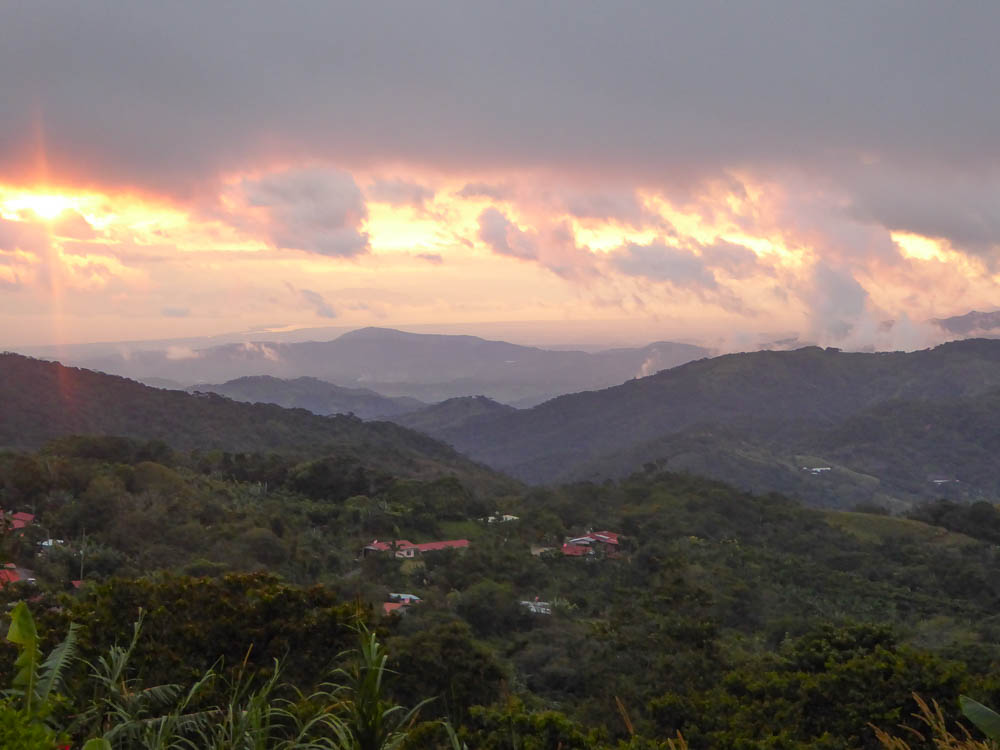
Cons
- Most expensive country we visited especially in the beach communities. Prices are only slightly lower than the US, for accommodations and food. (Medical care and manual labor is still significantly lower.)
- Local food gets boring fast; other food US prices
- Taxes make alcohol moderately expensive.
- Long rainy season at six months. The further south, the longer and more intense the rainy season.
- Procedure to get residency visa is long (1 year plus) and requires a lawyer.
Panama

Pros
- Large expat community in Boquete*
- Residency visa for retires provides the best benefits.
- Cheapest prices on alcohol
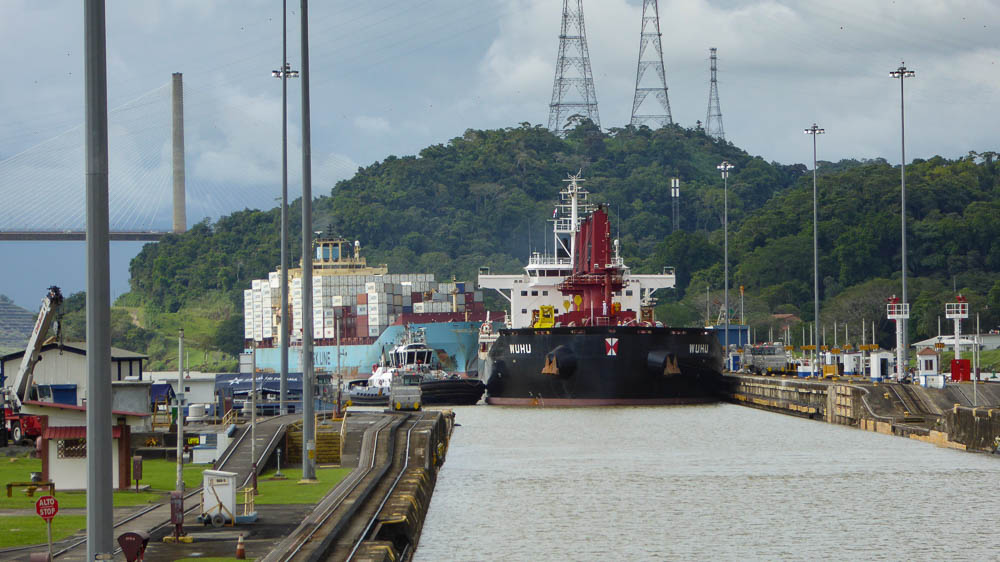
Cons
- Smaller towns, e.g., Boquete and Pedasi, expats have driven up real estate prices.
- Residency will require a lawyer’s assistance and can be expensive.
- Panama City is as expensive as the US.
- Local food gets boring quickly.
- Longest rainy season at nine months
Colombia

Pros
- Almost first world infrastructure especially in Medellin
- Wide variety of food available at reasonable prices
- Climate is very temperate in the highlands.
- Water is safe to drink in most of the country.
- Three month visa at entry, can be renewed for another three months. Easy to get permanent residency.
- Inexpensive health insurance system that expats can join.
Cons
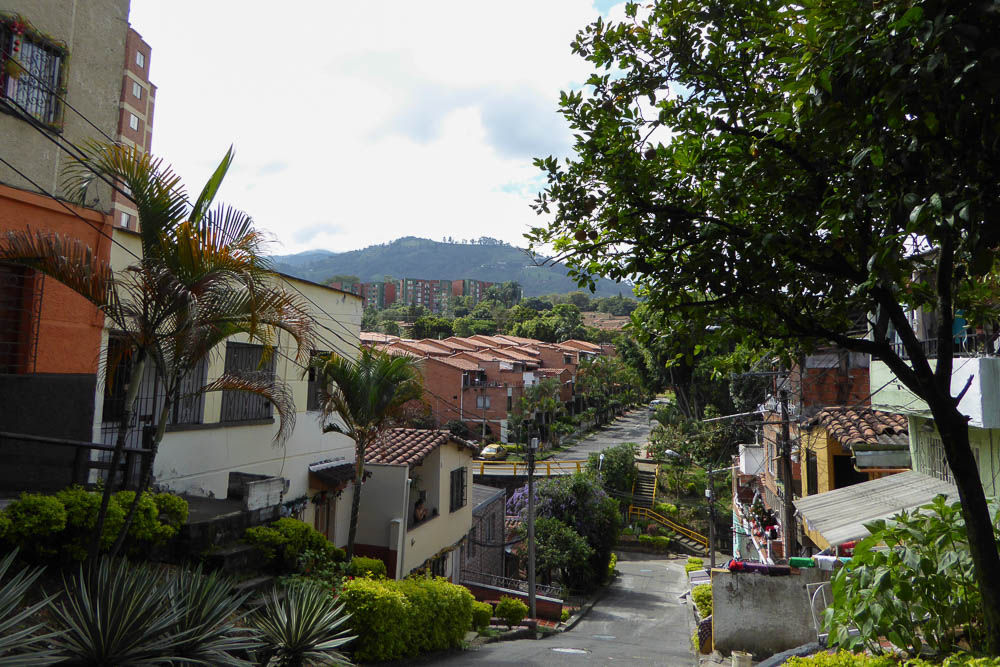
- Medellin smog and traffic
- Language is the hardest to understand. If we were going to live here, we would need to study Spanish in Colombia.
- Two rainy seasons: October – December and March – May, but together they are shorter than parts of Central America.
- Small parts of the country might still not be safe to visit.
Mexico

Pros
- Shortest rainy season
- Prettiest beaches along Rivera Maya
- Variety and tastiest food
- Variety of terrain and climates
- Inexpensive outside tourist areas; even in tourist areas, competition keeps prices lower except for accommodations.
- Longest tourist visa, six months at entry and easy to get permanent residency with a small pension.
- Large expat communities in certain areas*
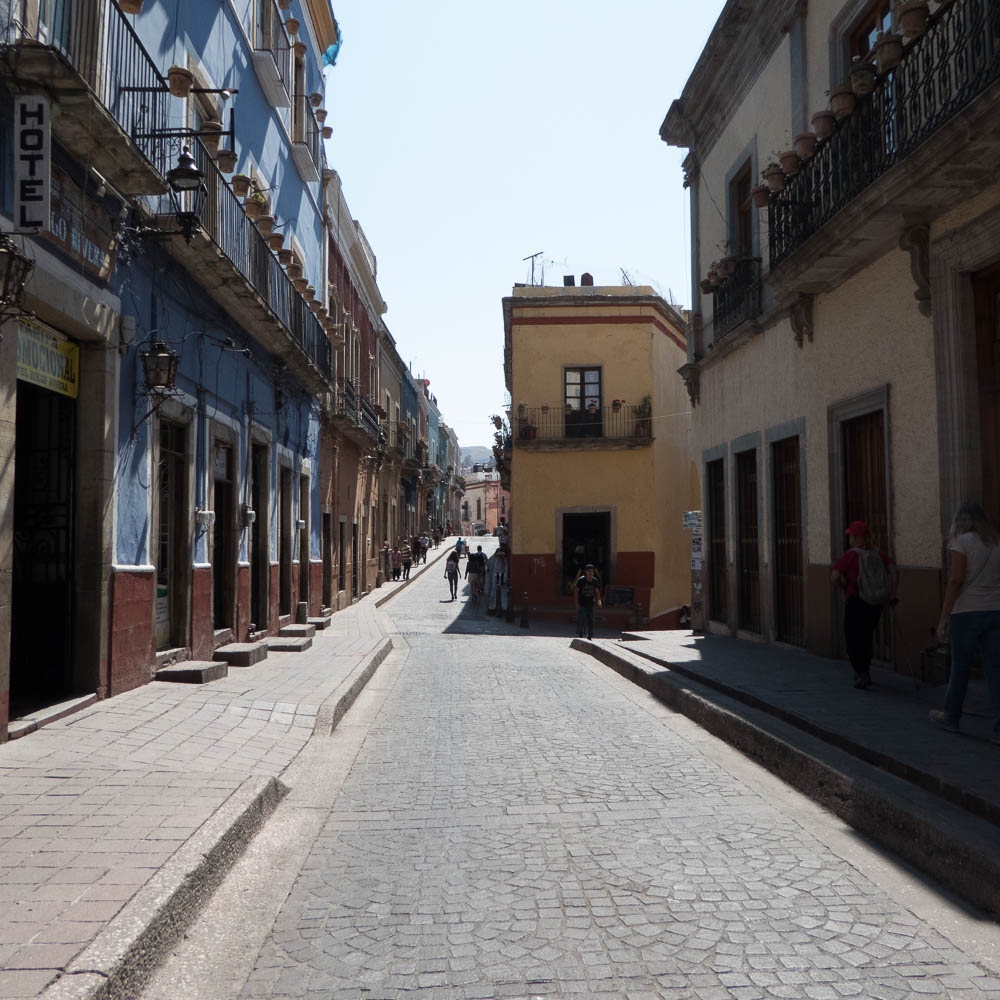
Cons
- Water not safe to drink
- Because of narco issues need to pay attention to area in which traveling
- Stray dogs
- Large expat communities in certain areas*
*Large expat community appears as both pro and con because it is easier to acclimatize but also has driven prices up, especially for housing, in some cases pricing locals out of the market.
Conclusion
One item unexpectedly rose in importance for both of us: “Is the water safe to drink?” Initially we didn’t view this as an issue, just don’t drink the water, but it overflows into other areas. Habitual things like rinsing a toothbrush, accidentally opening mouth while showering, washing fruit and vegetables, hauling bottled water from the store, etc. While we tried to be very careful, over the course of our six months in Latin America, Ian had four bouts with stomach distress, and Ann, because of prior ear surgeries, had four ear infections. All of these happened in countries where the water was not safe to drink. While surmountable during short term travel, do we really want to live full or part time dealing with this issue? While not necessarily a deal killer, this factor will be a major consideration when choosing a place to live.
We love the beaches of the Mexican Rivera Maya, and if it wasn’t for the water issue above, this might be our first choice. Indeed the area impressed us so much that we will be returning in November-December 2018 to take another look.
While the central valley of Costa Rica is still a possibility, the cost of living and the long rainy season (six months) are major considerations. Do we really want to live in a place that isn’t that much less expensive than the US?
The country that has left the most lasting positive impression on us is Colombia: for it’s low cost of living, it’s temperate climate, it’s almost first world infrastructure including water that’s safe to drink, its friendly and polite people, and its growing expat population. While it has two rainy seasons, they are short enough that it would provide us with opportunities to travel. The main downside is that the temperate locations are far from beaches.
Next Up: Reflections on long term travel
Ian & Ann

16 Comments
I figured Columbia would be #1!
Hi Carrie,
We’re curious, what makes you say that?
Ian & Ann
Love love these thoughts and summations… worth printing and keeping for reference, as well as simply fir information. Much appreciated this sharing!!!!! Thanks!
Hi Joan,
Turn about fair play, we’ve gotten a lot of information from you too.
Ian & Ann
This was a great recap and I love seeing the actual costs and comparison to the US. I love keeping up with your travels!
Thanks, Diane, we planned on posting this info sooner but it took us awhile to put it all together. But we knew it was important since the cost information we got from other bloggers was invaluable to us.
Ian & Ann
excellent post, what city in Mexico impressed you the most for living if you had to choose?
Hi Connie,
Guanajuato! For beach living for a month or so, we like Isla Mujeres or Puerto Morelos.
Ian & Ann
Michele calls Isla Mujeres “the Fire Island of Mexico” We have friends who retired there over 30 years ago, they are god parents to half the population there.
Hi Paul,
That sounds like a good thing to me. Ian’s never been to Fire Island, but we both really like Isla. Maybe we can hook up with your friends when we go back for a short visit in November.
Ann
I wondered what happened to you. Apparently you’ve been busy with a calculator.That’s a lot of number crunching. If you had to pick one country, which one would it be? I’m surprised Panama has a 9 month rainy season. That’s too much. I also thought it was a US territory so no sure why someone would need a lawyer. Good to know. When are you heading to Europe? Doesn’t Jonathan graduate soon? That’s exciting. Dang, you missed the Royal Wedding. Happy and safe travels my Gypsy friends. Love you both!!
Hi Kathy,
Love your wit! And Panama is an independent country. The one country would be Colombia. Apparently, you somehow missed our last post, which went out about 10 days ago, about our transatlantic cruise. We’ve been in Europe, specifically Spain, since May 6, currently in Granada. Thanks for your good wishes.
Ian & Ann
Fascinating , always thought of this but situations put us on call a lot. We have friends that moved from LAX and now are living permanently in Aijjec small town outside of Lake Chapala which is near Guatemala. Paul and I used to travel a lot to Mexico when we lived in LA many years ago. I love reading about your travels, safe journey..
Hi Michelle,
We were in Mexico most of February and March, including a short stay in the very pleasant town of Ajijic. Forgot to mention on FB that we liked Valencia (next post, should be up within a week or less, followed by posts on Seville/Jerez and then Granada) in Spain but sounds like your Spain itinerary is already set. Thanks again for your good wishes, and enjoy your time in Spain.
Ian & Ann
Regarding bars on windows, I’ve lived in several countries and bars on lower floor windows were common in each. I spent 9 years in Japan where crime may be the world’s lowest and the 3 places I lived each had bars on the downstairs windows. I also lived in Madrid for 2 years and everywhere had either bars or metal grates at ground level and sometimes even up a few floors. In both Korea and the Philippines they not only had bars but also broken glass embedded in the tops of the walls and sometimes razor wire over that.
A better question might be “why doesn’t the U.S. and Canada have more bars” since crime in the states is at least as high as most places I’ve been.
Hi John,
Yes, your comments about bars on windows are well taken. Latin America was at the beginning of our full-time travel, and now we can say we have seen bars or grates on the ground floor windows just about every place we’ve visited. But what we haven’t seen anywhere except Latin America is barbed wire (or broken glass) on top of walls surrounding houses. The two together gave us pause.
As far as the US and Canada, we can’t speak for Canada but in the US, we have seen bars on windows, particularly in high crime areas. Agree that the crime rate in the US is a sad situation.
Ian and Ann